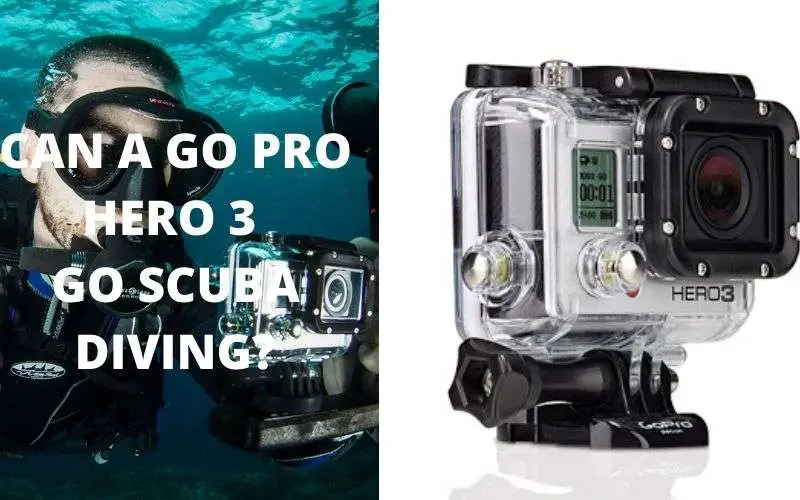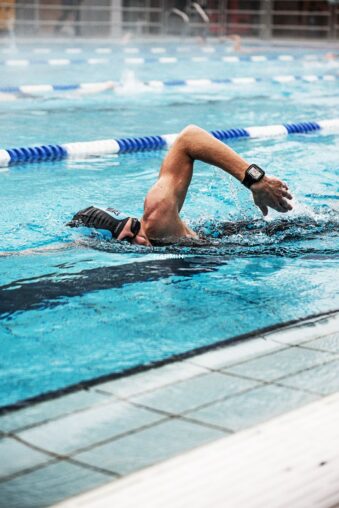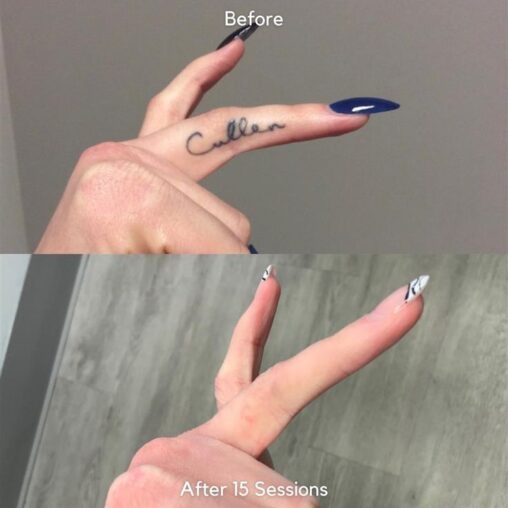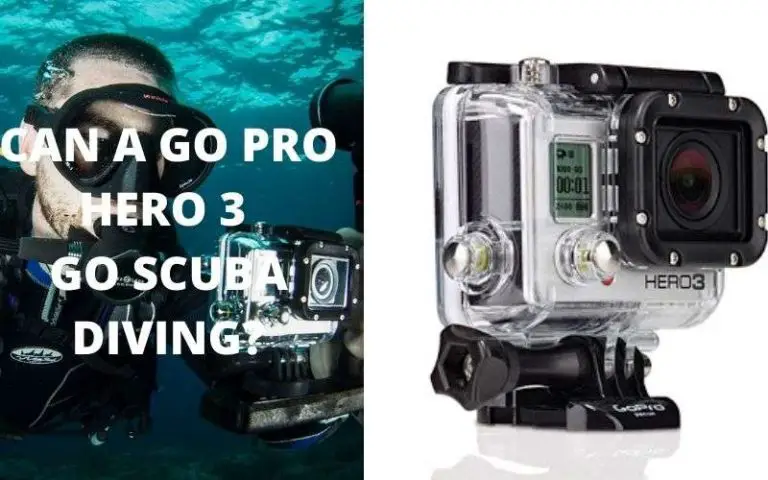
For swimmers, the ritual of shaving is as familiar as the chlorine-filled air at the poolside. It’s not just about aesthetics; it’s about optimizing performance in the water. But the timing of that shave is crucial, as shaving right before a swim can lead to skin sensitivity, discomfort, and potential infections.
In this comprehensive guide, we’ll delve into the world of swimming and shaving, exploring the best practices, ideal timing, and essential precautions to ensure a smooth glide into the pool.
Should You Shave Before Swimming?
When it comes to shaving before swimming, patience is indeed a virtue. Shaving immediately before hitting the water may result in unwelcome consequences. The freshly shaved skin is at its most vulnerable, sensitive, and exposed, making it susceptible to irritation and potential infections.
Chlorine or saltwater can aggravate this sensitivity, leading to a less than pleasant swimming experience. The rule of thumb is to shave 1-2 days before swimming, granting your skin the time it needs to heal.
The Effect of Chlorine
Chlorine, the pool’s ubiquitous companion, plays a pivotal role in swimming hygiene. However, its disinfectant properties can be a double-edged sword for freshly shaved skin. Chlorine can dry out and irritate the skin, a condition that is exacerbated when the skin is sensitive after shaving.
Moreover, any nicks or cuts from shaving may be further irritated by the presence of chlorine. A thorough post-swim rinse is advisable to wash away residual chlorine and alleviate potential skin issues.
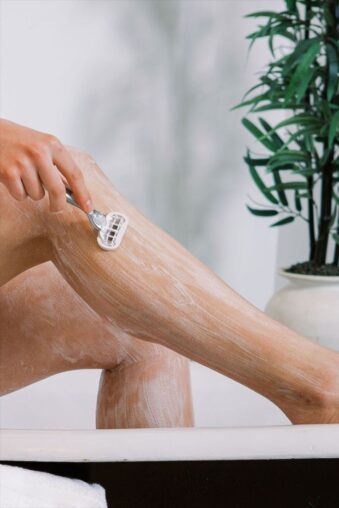
The Sting of the Saltwater: Effects on Shaved Skin
Saltwater, much like chlorine, has its share of effects on freshly shaved skin. Its drying properties may lead to itchiness and discomfort.
For those who’ve experienced nicks or cuts during shaving, saltwater can add a sting to the equation. To mitigate these effects, rinsing with fresh water after a saltwater swim is essential.
How Often to Shave for Swimmers
The frequency of shaving in the life of a swimmer largely depends on personal hair growth and comfort levels. Some swimmers adopt a weekly shaving routine, while others might opt for more frequent sessions.
A unique subset of swimmers lets their hair grow out and shaves on the morning of a crucial swim meet or a day or two beforehand.
When to Shave for a Swim
If you’re seeking the optimal moment to shave before a swim, it’s generally recommended to do so several hours in advance. Allowing this buffer period is essential for your skin’s recovery from any potential shaving-related irritation. If you’re planning a morning swim, consider shaving the night before.
Even if you’re prone to last-minute preparations, ensure your skin has at least 30 minutes to recover after shaving, as it is most sensitive right after this process.
Precautions for Pre-Swim Shaving
Shaving before swimming requires a series of well-thought-out precautions to ensure a seamless experience. Here are some essential tips:
- Razor Readiness: Always use a clean, sharp razor to reduce the likelihood of nicks and cuts. For longer hair, employ an electric trimmer before shaving with a razor blade.
- Hydration is Key: Shave in the shower with warm water or right after showering. You can mimic this effect by placing a warm towel on the area you intend to shave.
- Gentle Moisturization: After shaving, rinse your skin thoroughly and apply a mild, hydrating moisturizer to soothe the skin. Avoid immediate swimming to minimize the risk of irritation or infections.
Dealing with Skin Infections
If you encounter a skin infection after shaving and swimming, it’s essential to consult a medical professional promptly. Swimming should be avoided until the skin infection is fully healed to prevent further complications.
Maintain cleanliness in the affected area and adhere to the advice or treatment provided by your healthcare provider.

Recommended Shaving Products for Swimmers
Achieving a clean, close shave necessitates the use of the right tools and products. Here’s what we recommend:
- A quality razor: A clean, sharp razor blade is paramount for a smooth shave.
- Electric clippers: Electric trimmers are perfect for reducing longer hair to stubble.
- Shaving creams or gels: These products offer a smoother shave with less irritation.
- After-shave products: Invest in after-shave solutions that provide soothing and hydrating properties for your skin. Avoid alcohol-based products that may lead to dryness and irritation.
Post-Shave Skincare
Post-shave skincare is just as essential as the shaving process itself. Incorporate these practices:
- Hydrating moisturizer: After shaving, apply a soothing and hydrating moisturizer to minimize potential irritation.
- Sunscreen: If you’re swimming outdoors, sunscreen is a must. Freshly shaved skin can be more susceptible to sunburn. Avoid oil-based products to maintain buoyancy in the water.
To Shave or Not to Shave: A Personal Choice
The decision of whether to shave before swimming is, in fact, a matter of personal preference. Competitive swimmers often engage in this practice to reduce water resistance and enhance speed.
However, for recreational swimmers, the impact on performance is minimal. Ultimately, the choice should align with your comfort and swimming goals.
Here’s how you can make an informed decision:
Shaving for Competitive Swimmers
Competitive swimmers are well-versed in the advantages of shaving. By reducing drag, shaved bodies can glide more efficiently through the water, potentially leading to improved performance.
For these athletes, shaving is often considered an integral part of their pre-competition routine. The precision and timing of their shave can be a crucial aspect of their strategy, helping them reach their peak in the water.
Shaving for Recreational Swimmers
For casual or recreational swimmers, the benefits of shaving may not be as pronounced. The minute differences in speed and resistance shaved hair can offer might not significantly impact the swimming experience.
Therefore, the decision to shave should be guided by personal comfort and preference rather than performance gains. If you enjoy the feel of smooth skin or find the act of shaving relaxing, then it can be a worthwhile pre-swim ritual.
Skin Sensitivity Considerations
Another factor to consider is your skin’s inherent sensitivity. Some individuals have more sensitive skin, making them prone to post-shave irritation and discomfort. If you fall into this category, it might be best to give your skin a little extra time to recover before swimming.
You can also explore alternative methods of hair removal that might be gentler on your skin, such as hair removal creams or waxing.
Caring for Your Skin
Regardless of your decision to shave, proper skin care is essential. Regularly moisturizing your skin and using sunscreen when swimming outdoors helps maintain skin health.
A healthy, well-hydrated epidermis is less likely to encounter issues after shaving and swimming.
Shaving Alternatives
If you want to maintain sleek, hair-free skin without the potential downsides of shaving, consider alternative methods like waxing or laser hair removal. These approaches can provide longer-lasting results and might be more suitable for individuals who swim regularly.
Conclusion
Whether you choose to shave before swimming or not depends on your personal preferences, swimming goals, and the sensitivity of your skin. While competitive swimmers often opt for shaving to gain a competitive edge, recreational swimmers may find that the benefits are more related to personal comfort and aesthetics.
The key is to take care of your skin, allowing it to recover after shaving and ensuring it’s protected when exposed to the elements. So, dive into the pool with the confidence of your choice, knowing that smooth waters await you on your swimming journey.




